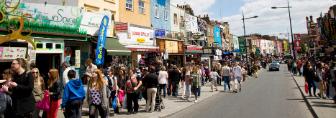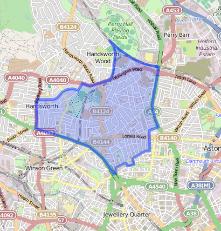Communities, identities and mobilities research projects
Professor Farzana Shain (£47,980); 22 months. A generation of British children has grown up in the shadow of 9/11 amid concerns about 'security' and 'terrorism'. Yet, little is known about how children and young people understand the impact of the 'war on terror' on their own lives and the lives of others.
Shain (£47,980); 22 months. A generation of British children has grown up in the shadow of 9/11 amid concerns about 'security' and 'terrorism'. Yet, little is known about how children and young people understand the impact of the 'war on terror' on their own lives and the lives of others.
Focusing in particular on British teen girls who identify as Muslim, this Fellowship will contribute original research on young people's accounts of growing up in the time of the 'war on terror'. It will not be confined to questions of cultural belonging but will explore the girls' educational and future aspirations taking account of socio-economic factors that underpin cultural experiences. The project will assess how Muslim girls currently, and in the future, expect to navigate a range of contradictory expectations on them.
 Dr Ala Sirriyeh (£47,357); 13 months. In 2001 a new civil rights movement - 'the Dreamers'- emerged in the USA; part of growing migrant-led protest in the Global North, but unique in being led by undocumented young people.
Dr Ala Sirriyeh (£47,357); 13 months. In 2001 a new civil rights movement - 'the Dreamers'- emerged in the USA; part of growing migrant-led protest in the Global North, but unique in being led by undocumented young people.
Restrictive immigration and citizenship policies across the Global North mean that this generation who arrived in 80s, 90s and 2000s during a period of growth in international migration have grown up into adulthood in these nation states yet legally remain 'non-citizens'. The Dreamers began as a campaign for a pathway to citizenship for undocumented young people who arrived in the USA as children and grew up there. Through a Southern California case study, this research study will examine how undocumented immigrant young activists' understandings and experiences of citizenship shape, and are shaped by, their political activism in the 'Dreamers' movement in the USA.

This Norface-funded project (2015-17) reconceptualises welfare theory through responding to the question of how all residents living in superdiverse neighbourhoods access healthcare.

Increasing attention is being placed on the impact of new migration flows, and especially on the respective ‘capacities’ of different places to accommodate new immigrants. But there is little discussion over the importance of different characteristics of places in shaping such patterns of movement – both for old and new immigrants and for indigenous populations. Funded by a Leverhulme Research Fellowship (2015-17), the research explores the links between residential mobility and place, and the importance of different characteristics of place on shaping individuals' lifestyles, patterns of mobility or fixity, feelings of belonging and relative attachment to particular places.
The research is being undertaken in two neighbourhoods - Lozells and East Handsworth and Ladywood – located within the super-diverse city of Birmingham (UK). The former is a traditional reception area for immigrants and where 'old' immigrants (those who arrived more than ten years ago) outnumber 'new' migrants. Nearly half the population was born outside of the UK. Ladywood - on the other hand, received the highest numbers of ‘new’ immigrants (those who arrived in the last ten years) compared to any other part of the city and where nearly two-thirds of the population was born in the UK.


